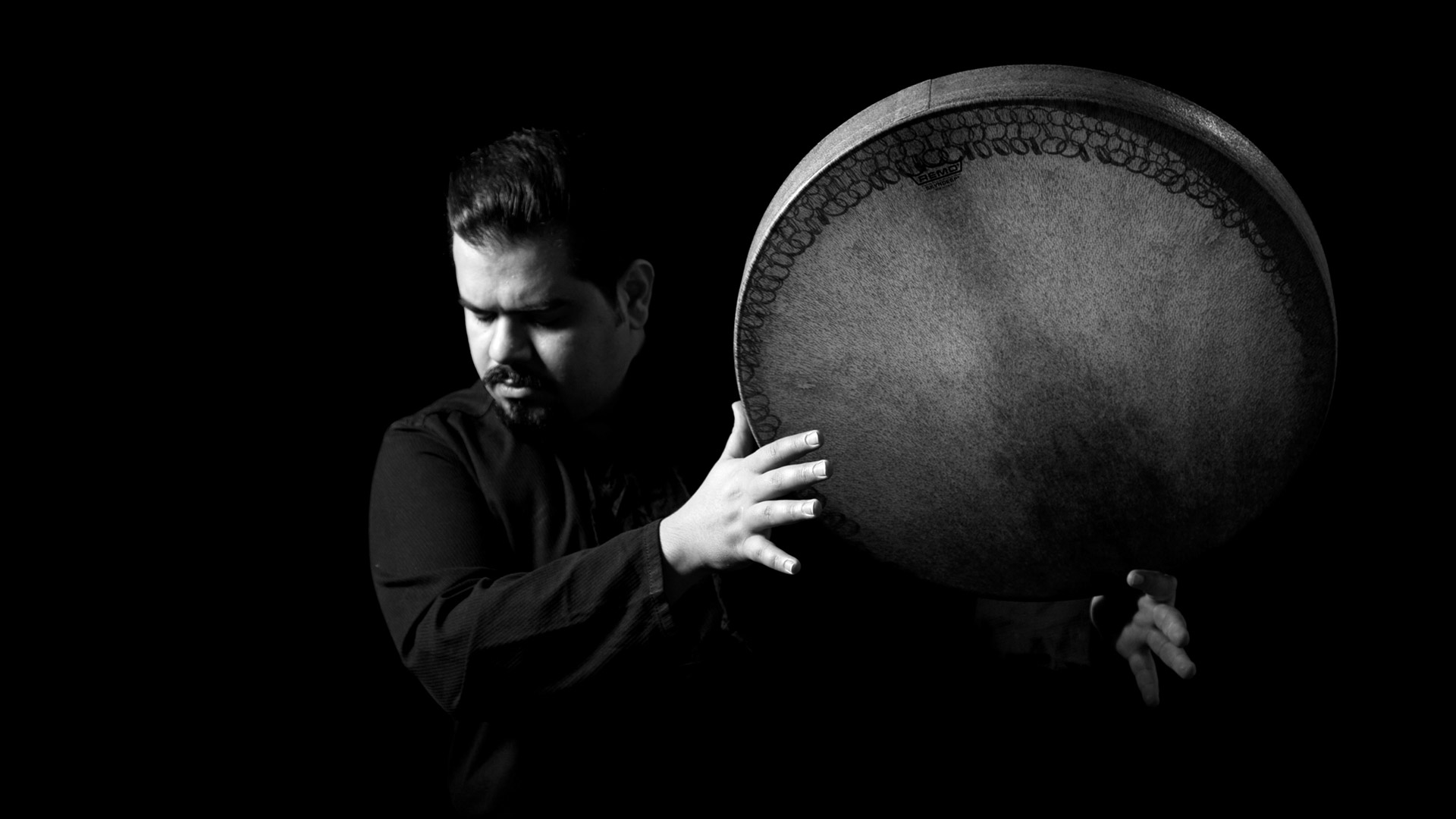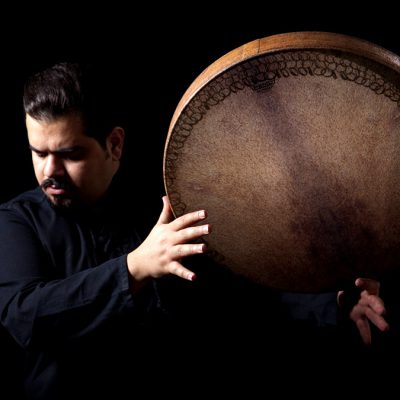
Daf (history and teaching method)
History:
Daf is one of the most famous and oldest Iranian percussion instruments that belongs to the large family of single-sided skin-sounds. This instrument, which is played with the fingers of the hand, was mostly used in the past for playing in khaneqahs and mystical music. But today it is used in most styles of Iranian music, including instrumental and modal and folkloric and fusion music and so on. Daf and dep are the names of the sound that comes from hitting a stroke on the skin of the daf.
Anthropology:
In the Encyclopedia of Iranian Music it is written: Daf is a circle of wood that has skin stretched over it. In some areas, they also hang rings on it. And in the Sufi gathering of sama, they sing religious and mystical poems with captivating and soulful melodies in different modes and rhythms along with the daf. And their gathering is passion and longing and supplication.
Moein dictionary : Daf (Persian Arabic, Turkish, Albanian) is the same as circle. Besides, this word generally means circle in Egypt and Albania. In the prominent relief of deer hunting in Taq-e Bostan, two musicians, one on the left playing a flute or a sorna and the other holding a square instrument in his hand, which is a kind of square-shaped daf. The shape of the hands of the player of this instrument is such that more than anything else, it supports the theory that the daf has been of interest since ancient times. This type of daf, that is, the square daf, is still popular in some parts of Iran.
In the Persian Encyclopedia of Mosaheb it is written: Daf is an instrument that is essentially a frame that has skin stretched on one side of it. And it is played by hitting it with the fingers or shaking it.
The spiritual and religious meaning:
It is only in the Kurdish regions of Iran that the daf or circle is used as a religious instrument. They play the daf with the rhythm of supplication for the state of sama or ecstasy. The sound of this instrument is like a circle but more exciting. It has a special dignity that makes the listener think of the worlds of dreams. There is a legend among them that traces the origin of the drum to the time of Prophet Adam. The story goes that when Abel brought his gift, a beautiful lamb, to offer as a sacrifice to God, and Cain, who was a farmer, brought straw as a gift. And God lit a fire and did not accept it. Adam, the chosen one of God, kept the lamb that God had accepted. And after raising it enough, he sacrificed it and tanned its skin with the guidance of an angel from the heavenly realm and wrapped it around a stick and used it to pray to God.
This instrument, as it appears from the books of music and writings and poems, was used in the Islamic period of Iran to support the sound and maintain the rhythm and was the main element of the gatherings of joy and pleasure and the assemblies of the people of taste and mysticism who also used it by singing songs and lyrics. In the dictionaries, they write in the meaning of drum or circle: It is a wooden hoop that they stretch a skin over and hang rings on the hoop. In the past, they used to stretch deer skin over the drum to have a better resonance.
Jingle
There were also drums or circles that they attached bells to the hoop and played. They called the bells of the drum jingle. In the Islamic period, they called those who played the drum or circle jingle player. Some of the greatest players of this instrument are Master Khalifeh Karim Safvati and Master Khalifeh Agha Ghousi and among the current veterans are Master Bijan Kamkar and Master Masoud Habibi.
The teaching method of daf
The instruction of playing the daf begins with learning how to hold the instrument and play the basic movements, and in the course of the instruction, the book of Master Bijan Kamkar and the authored booklet of Roozbeh Zarei are used. Generally, the daf-playing class consists of three levels: elementary, intermediate and advanced, in which music theory, the basics of rhythm-reading and music dictation are taught alongside the instruction depending on the level of the courses.
Elementary level :
Learning simple, compound, local and Sufi rhythms, proper use of rings and familiarity with microtones are included.
Intermediate level:
In the intermediate level, topics such as: Learning long rhythms, ensemble playing, solo playing and playing different types of roll is discussed.
Advanced level:
And finally, in the advanced level, complementary techniques, non-Iranian rhythms, complex meters, concentration exercises, specific microtones, principles of writing pieces and improvisation are taught.

